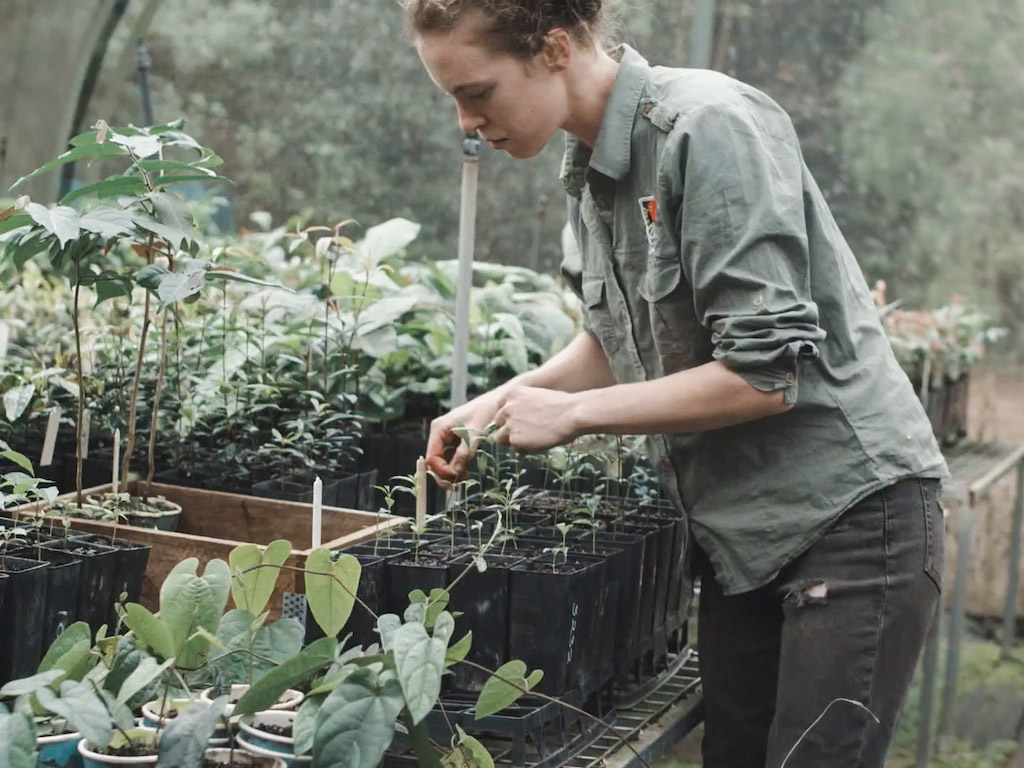In Australia’s ‘Wild’ Magazine: Daintree Revival
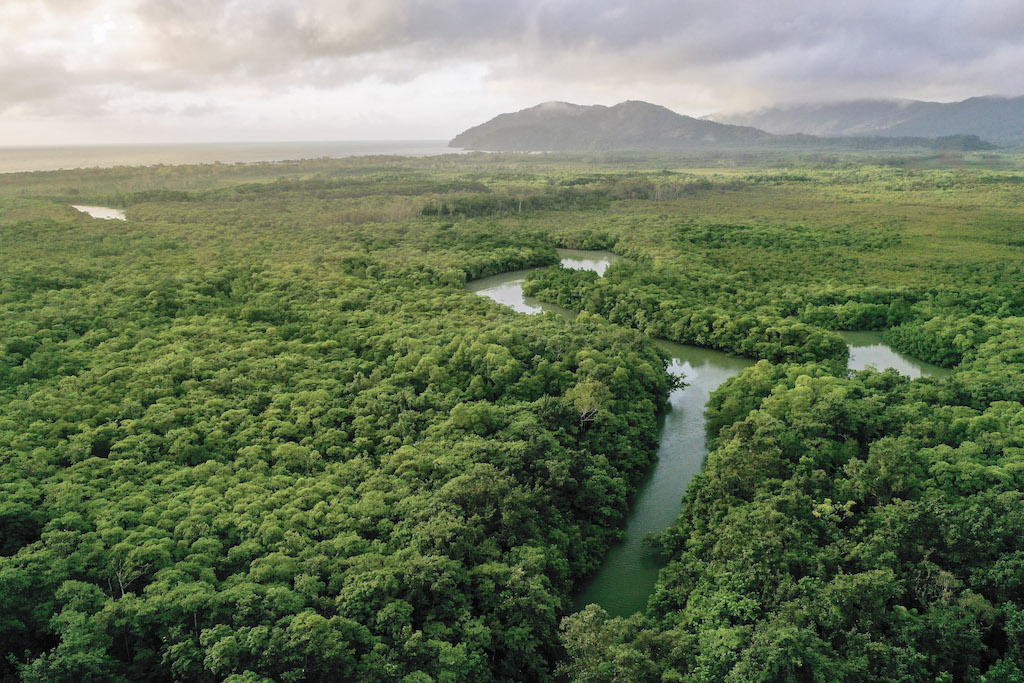
Cooper Creek meanders through the midst of a 180 million-year-old rainforest.
Credit Martin Stringer
[‘Daintree Revival’ by Johan Augustin, appeared in Wild Magazine, 2022 Winter Edition #184.]
Daintree Revival
Queensland’s rainforests have long been cleared to give way to logging and sugarcane fields. But now the comeback of the world’s oldest rainforest has begun.
Words JOHAN AUGUSTIN
The mist from a recent shower still lingers in the air. Rain in this part of northeastern Queensland is a frequent event, which not only makes the undergrowth – consisting of big ferns and hundreds of other plant species – constantly soaked, the humid air creates a water vapour that literally brings out all the aromas in the rainforest.
We are in the Daintree, and not just in old-growth forest, but, at 180 million years old, in the oldest existing rainforest in the world. It’s also Australia’s biggest rainforest, covering 1,200km², and it hosts 3,000 plant species and varied fauna. Hundreds of threatened animal species – such as tree kangaroos and cassowaries – live here, as do roughly two-thirds of the country’s bat and butterfly species, and over a third of Australia’s frogs and marsupials.
But the forest that remains is just a fragment of what once was. Cattle grazing, sugarcane fields and other developments have severely damaged or destroyed large swaths of the ancient forest. Recently, though, a breeze of change is starting to blow through the area. Environmental organisations have begun collaborating with the landowners to restore these forests. And some organisations, like not-for-profit Rainforest Rescue, are conducting buy-back schemes of once-cleared land so that forests can be completely regenerated; Rainforest Rescue alone has bought roughly forty lots of private land.
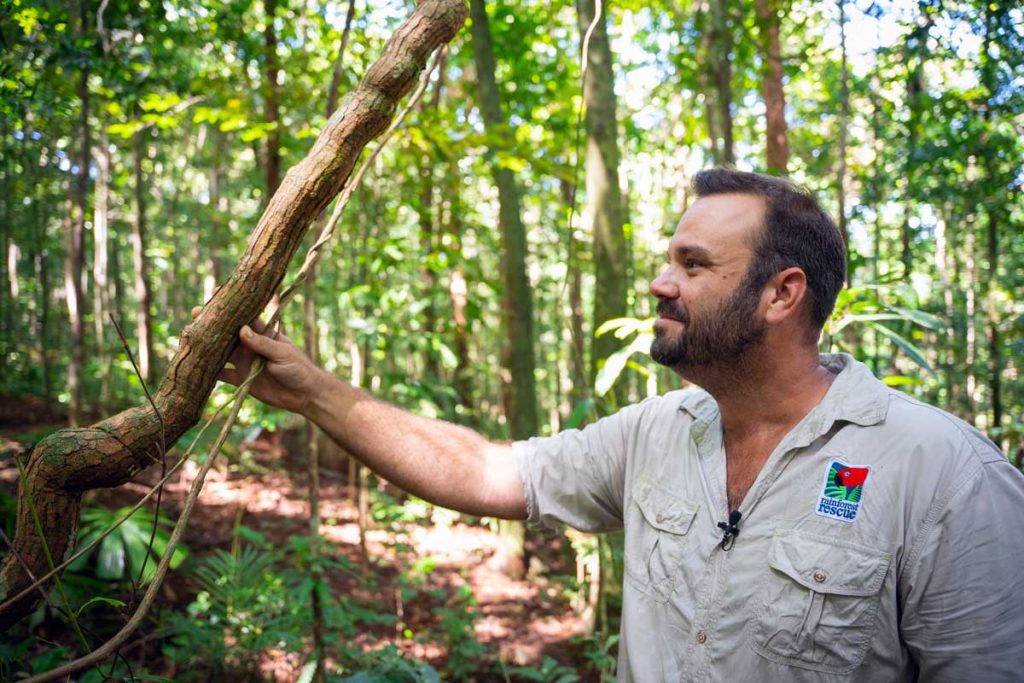
Justin McMahon from Rainforest Rescue at Lot 18—Rainforest Rescue’s 37th rescued property.
Credit Martin Stringer
But even when the farming stops, old-growth forest doesn’t just reappear overnight.
“We use some pioneer species to create substance,” says Justin McMahon, a land manager working with Rainforest Rescue. His handshake is firm and, as he’s leaving the shade of the old-growth forest, he walks into a lot which used to be a sugarcane field, and now covers plants of various sizes. The pressing heat in the open shows no mercy, and Justin – although he’s used to Queensland’s climate – is drenched in sweat. Even so, he still smiles and carries on. Justin is “building species”; it’s the process, he says, of planting various types of vegetation species next to each other so they can thrive. He’s planting some 200 tree species, some of which will grow faster than others and thereby offer shade and nutrients for the ones that follow. Next to the field grows a forest corridor—where trees were planted a few years ago, with some now reaching more than ten metres in height. The trees now attract animals like flying foxes and endangered cassowaries, which then will disperse fruits and seeds naturally over even greater areas. It’s a success story in the making.
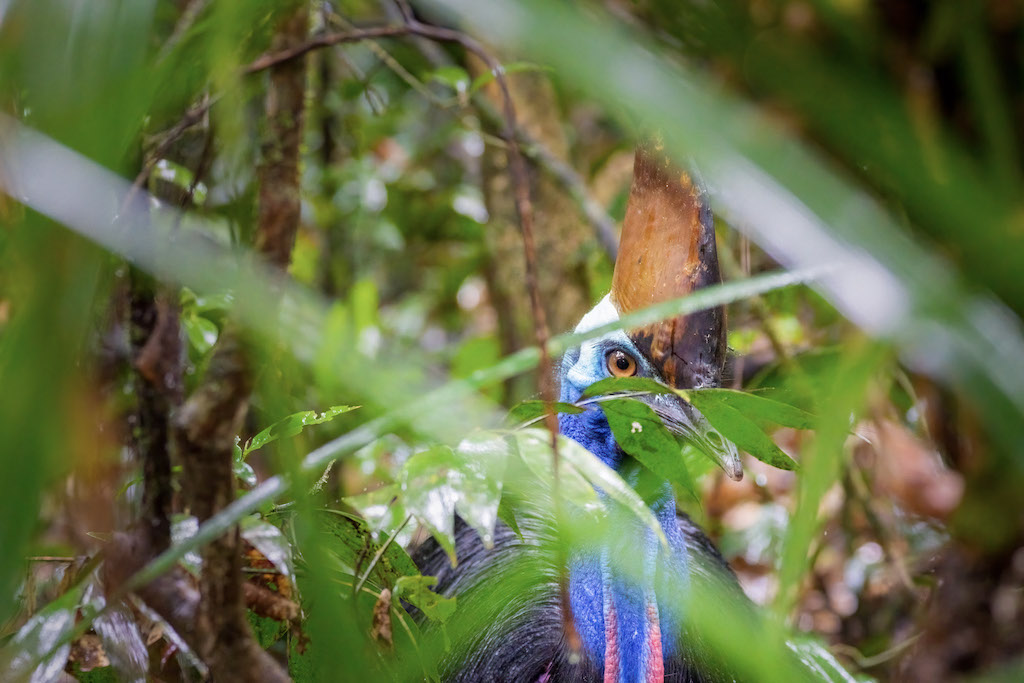
The second-largest bird in the world, cassowaries play an important role as rainforest gardeners.
Credit Martin Stringer
New Threats and New Solutions
Eastern Kuku Yalanji culture is one of the world’s oldest living cultures, and part of managing this area will involve Elders and rangers sharing their knowledge with the younger generation. They’ll do so in diverse fields, such as controlled fires, regeneration of plants, and understanding wildlife such as crocodiles. But the knowledge of the Eastern Kuku Yalanji people is planned to be spread further, says John Dockrill. As members of the Kuku Yalanji people become leaders in the tourism industry, he says they’ll share their knowledge with visitors. The result will be a network of people helping to protect the diverse ecosystems of the Daintree – its rainforests, woodlands, wetlands, and mangroves – which together form one of the most important natural places on earth.
Forest and Reef
The Daintree is famously the only location where two UNESCO World Heritage-listed areas meet. The rainforests stretch out to the Coral Sea, home to the Great Barrier Reef and its WHA-listed reserve. Apart from being an important tool as a carbon sink in the fight against climate change, the Daintree is also preventing leakage of agricultural nutrients from reaching the reef—which is already affected by recurring bleaching events.
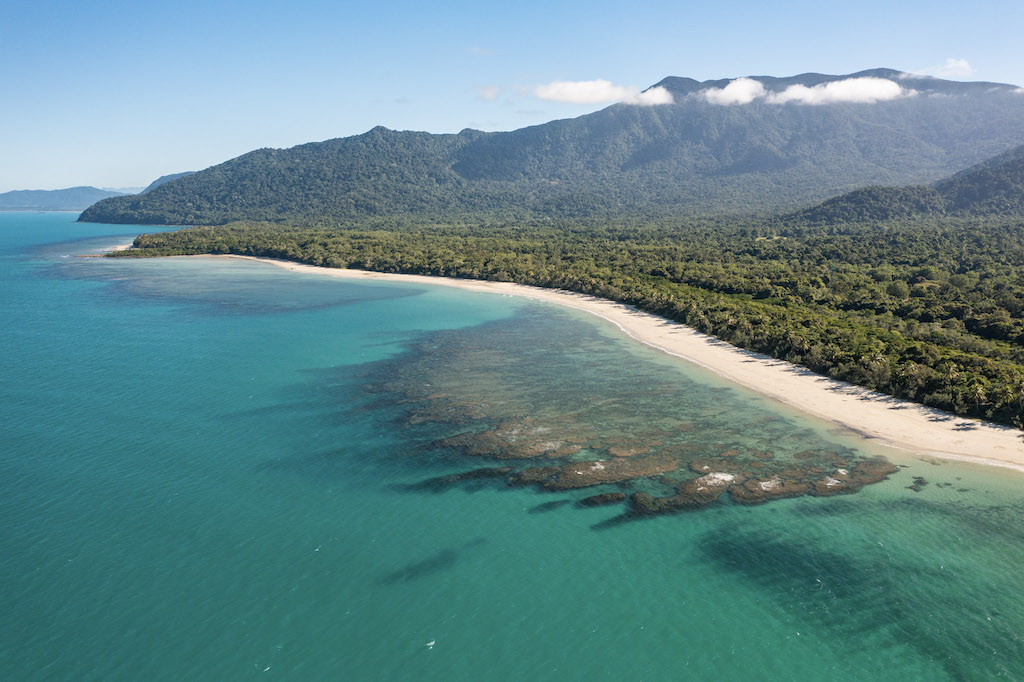
Rainforest and reef in the Daintree.
Credit Martin Stringer
“The forest acts as a barrier before the reef,” says Steve Edmondson. His family business in Port Douglas – Sailaway Reef and Island Tours, which brings tourists on reef trips to view sunsets with the Daintree as a backdrop – is involved in the planting of corals, creating what will be new ‘coral gardens’. “We already see how the new corals create ecosystems with many different fish species,” Steve says. He also says the reef is resilient, and it’s on its way back despite the bleaching events. “It just needs a little help on the way, just like the rainforest.”
And a little help is exactly what organisations such as Rainforest Rescue are bringing in. Many locals are not only interested in replanting rainforest, but also want to see the restoration of wetlands. And Justin McMahon is positive about the future in the Daintree. “It’s all about finding a balance,” he says. If only given a chance, nature will bounce straight back.
[Link to the PDF article, which appeared in Wild Magazine 2022 Winter Edition #184.]
CONTRIBUTOR: Sydney-based journalist Johan Augustin focuses on environmental and travel-related topics.
Want more good Rainforest news in your life?
Subscribe to our eNews | Follow us on Instagram | Like us on Facebook | Subscribe to our YouTube channel
Help Protect Rainforests Forever
Donate to Protect Rainforests Forever | Become a Rainforest Guardian for as little as $2 a month | Partnership Options

